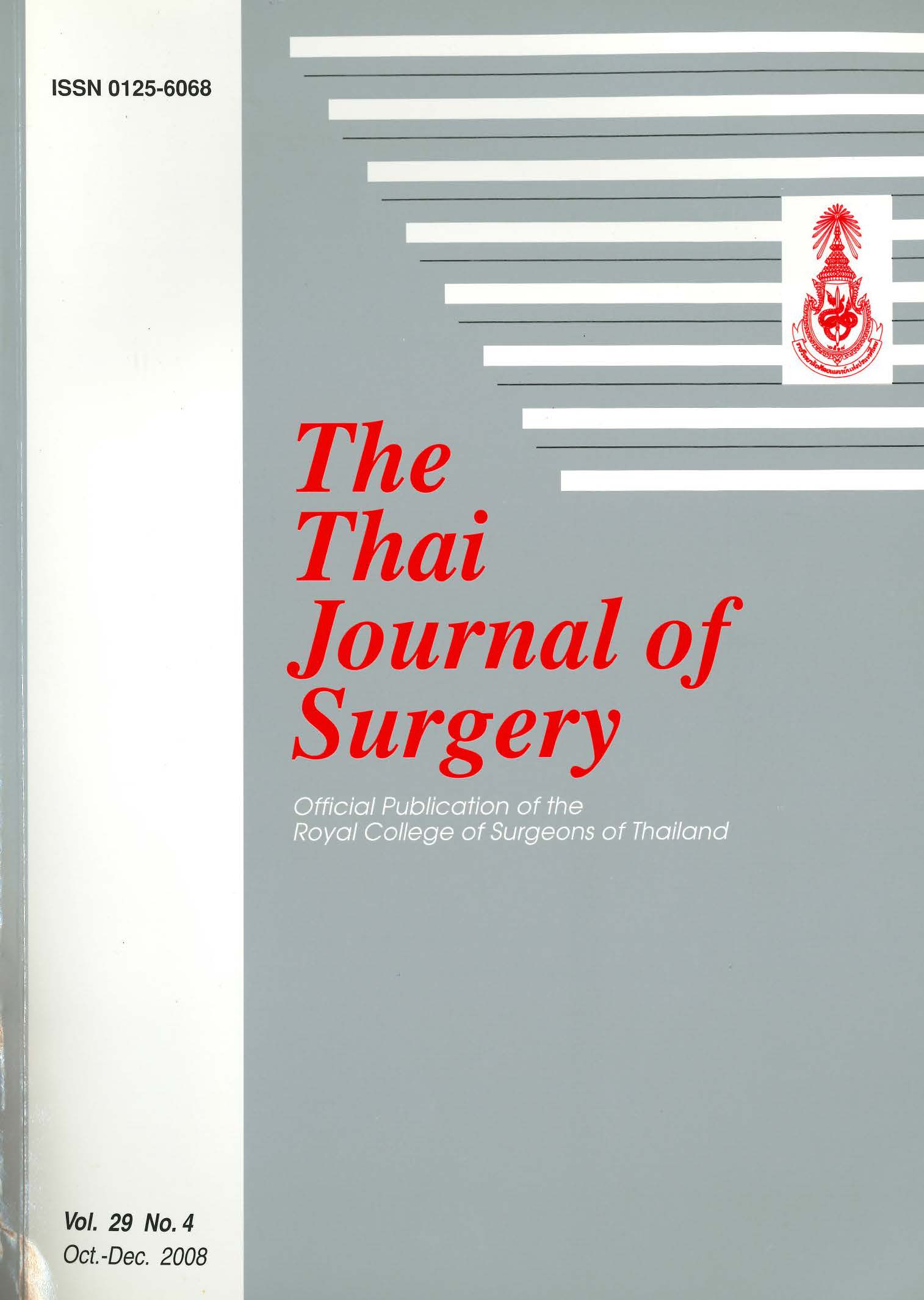Accuracy of Per-rectal Examination for Diagnosis and Predicting Type of Appendix in Patients with Acute Appendicitis
Keywords:
Acute appendicitis, Per-rectal examination, Appendix typeAbstract
Introduction: Type of appendix is a well-recognized factor responsible for difficulty in appendectomy. Traditionally per-rectal examination should be performed in all patients with acute abdomen. Our goal of this study was to demonstrate the accuracy of per-rectal examination for diagnosis of acute appendicitis and to predict type of appendix by the result of per-rectal examination.
Material and Methods: We reviewed the relationship between positive per-rectal examination and all types of appendix in patients with acute appendicitis from January 2006 to October 2006 at our institution.
Results: There were 142 patients in the study including 68 males. The mean age at diagnosis was 32.8 years in male and 40.7 years in female. Per-rectal examination was performed in 113/142 (80%) patients. At operation, pelvic type was the most common type. Accuracy of per-rectal examination for diagnosis of acute appendicitis and predicting pelvic-type appendicitis are 52.3% and 48% respectively.
Conclusion: Our study demonstrated that the accuracy of per-rectal examination as one of clinical diagnostic tools had low sensitivity and specificity and could not be used routinely as a predictor of type and diagnosis of acute appendicitis.
References
2. Beasly SW. Can we improve diagnosis of acute appendicitis? BMJ 2000;321:907-10,
3. Bickell NA, Aufses AH Jr, Rojas M, Bodian C, How time affects the risk of rupture in appendicitis. J Am Coll Surg 2006;202:401-6.
4. Prystowsky JB, Pugh CM, Nagle AP. Appendicitis. Curr Probl Surg 2005;42:688-742.
5. Humes DJ, Simpson J, Clinical review: acute appendicitis. BMJ 2006:333:530-4.
6. Bonello JC, Abrams JS. The significance of a çposittiveé rectal examination in acute appendicitis. Dis Colon Rectum 1979;22:97-101.
7. Dixon JM, Elton RA, Rainey JB, Macleod DA. Rectal examination in patient with pain in the right lower quadrant of the abdomen. BMJ 1991;302:386-8.
8. Manimaran N, Galland RB. Significance of routine digital rectal examination in adults presenting with abdominal pain. Ann R Coll Surg Engl 2004; 86:292-5.
9. Wakeley CP. The position of the vermiform appendix as ascertained by an analysis of 10,000 cases. J Anat 1933;67:277-83.
10. Dunning PG, Goldman MD. The incidence and value of rectal examination in children with ruptured appendicitis. Ann R Coll Surg Engl 1991;73:233-4.
Downloads
Published
How to Cite
Issue
Section
License
Articles must be contributed solely to The Thai Journal of Surgery and when published become the property of the Royal College of Surgeons of Thailand. The Royal College of Surgeons of Thailand reserves copyright on all published materials and such materials may not be reproduced in any form without the written permission.



